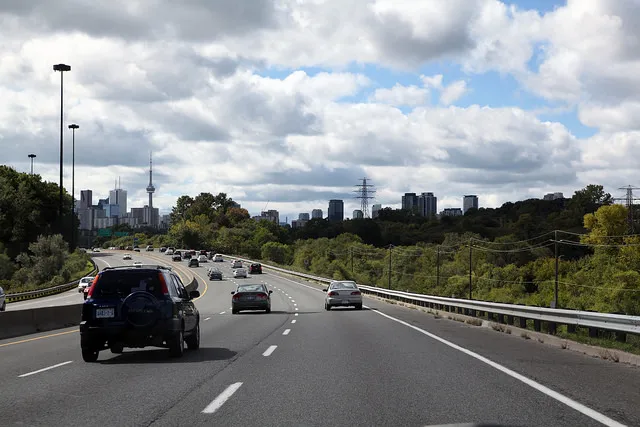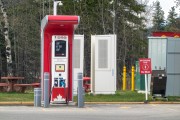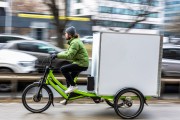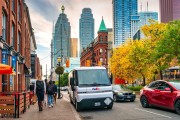Today the City of Toronto got one step closer to joining the long list of world-class cities using smart tools to control congestion and raise desperately-needed revenue for city-building, including transit expansion.
In his address at the Toronto Board of Trade today, Mayor Tory announced a proposal for raising new revenue, which includes new expressway tolls ($2) on the Don Valley Parkway and Gardiner, a new hotel tax, and the removal of the vacant property tax rebate.
If the mayor is successful in rallying support from his fellow councillors for his proposal, the combined tools could take a bite out of the structural deficit plaguing the city (operating gap of over $500 million projected in 2017) and provide much needed resources for capital projects.
This announcement came on the heels of a staff report, released this morning that spells out a number of other options that should also be considered.
A fact sheet we published last week outlines the key ingredients of a workable strategy for raising new city revenue. Here’s how Mayor Tory’s endorsement stacks up against our criteria:
- Produce adequate revenue: Based on the numbers provided in the reports, expressway tolls at $2 could bring in annual revenues of up to $166 million while a hotel tax could harness $21-$126 million. It’s important that the proposal be measured against operating gaps and investment goals. Any attempts to remove one element would weaken the proposal overall.
- Provide incentives for the types of travel behavior that will help solve our problems: Road tolls fall squarely into this category, as would a revival of the vehicle registration tax, which is recommended in the staff report.
- Start with the tools already available to the City: Most of the tools proposed will require additional approvals from the province.
- Generate funds on an ongoing basis: By not pursuing the sell-off of assets like Toronto Hydro, the proposal rightly focuses on sustainable sources of revenue.
The new road tolls are the backbone of the mayor’s endorsement and would be a huge step forward for the region. As we identified in our report Fare Driving, which explores the potential for congestion pricing on the Gardiner and DVP, these mechanisms will benefit drivers by reducing travel times. The tolling structure should evolve to remain fair and reflect increasing transit options over time. As mentioned above, incentives for behavior change are necessary to encourage drivers to carpool, or better yet, leave the car at home and take transit.
Whenever it comes to new taxes and fees, equity considerations must be paramount. Without new revenue tools, however, the city would continue to rely more heavily on property taxes, which are regressive with respect to income and don’t affect road users from outside of the city.
After a series of hits to city services like transit, from budget cuts to repeated fare increases, this announcement is extremely encouraging. However, it’s far from a done deal. And the devil will be in the details in terms of just how much revenue and congestion relief we can expect, and how much of revenue will go to smart transit. All eyes are on decision-makers as they make choices that will determine the future of the city – and, by extension, the region – in the coming months.







